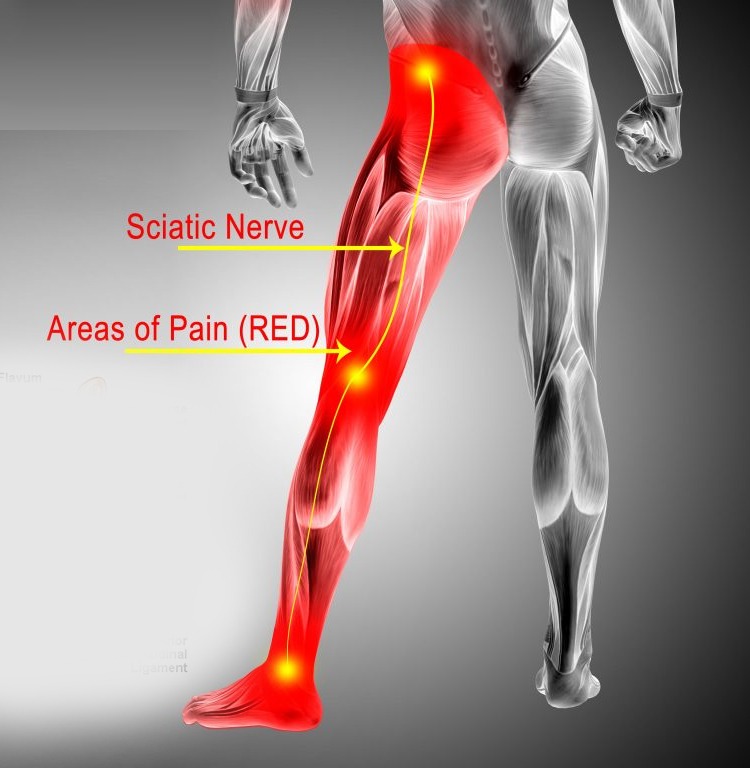Sciatica isn’t just a simple backache — it’s a complex nerve condition that can stop even the world’s best athletes in their tracks. Recently, fans of basketball and the Los Angeles Lakers have been buzzing about LeBron James’s injury, with reports suggesting that nerve irritation and lower back pain, possibly linked to sciatica, have kept the superstar temporarily out of games. For millions of Americans who deal with this painful condition each year, the headlines feel all too familiar.
What Is Sciatica?
Sciatica refers to pain that radiates along the sciatic nerve, the longest nerve in the human body. This nerve begins in the lower spine, travels through the hips and buttocks, and runs down each leg. When the nerve becomes compressed or irritated — often because of a herniated disc, spinal stenosis, or muscle inflammation — it can cause sharp, shooting pain that radiates down the leg.
Some describe it as an “electric shock” sensation, while others experience burning, tingling, or numbness. It’s not unusual for people to feel weakness in the affected leg, making it difficult to walk or even stand for long periods. In essence, sciatica is not a condition itself but a symptom of an underlying issue affecting the spine or surrounding muscles.
LeBron James and the Sciatica Connection
For LeBron James, one of the most durable and disciplined players in NBA history, any hint of sciatica can be a serious concern. Reports about the LeBron injury surfaced during a critical stretch of the Lakers schedule, causing speculation that nerve-related pain might be limiting his movement and explosiveness.
While the team hasn’t released full medical details, fans quickly noticed clues suggesting that LeBron James’s sciatica or nerve inflammation could be behind his recent absence. For an athlete who depends on explosive power, quick turns, and sustained endurance, even a minor flare-up can severely impact performance.
How Sciatica Affects Athletes
Nerve pain is unpredictable — it doesn’t respond like a muscle strain or sprain. When the sciatic nerve is inflamed, pressure from movement or prolonged sitting can make pain worse. For LeBron, this likely means modifying workouts, managing inflammation, and sitting out of certain games to avoid long-term damage.
How Common Is Sciatica in the U.S.?
LeBron’s situation also highlights just how widespread this condition is among everyday Americans. According to the National Institutes of Health (NIH), roughly 40% of people in the U.S. will experience sciatica at some point in their lives. It’s most common between the ages of 30 and 60 and often linked to a combination of lifestyle and physical factors — from long hours of sitting and poor posture to heavy lifting and aging discs.
What’s striking is how both sedentary lifestyles and overexertion can trigger it. For workers who spend long hours seated, weak core muscles and spinal compression are major risk factors. For athletes like LeBron, repetitive motion and physical strain can create similar problems.
Treatment and Recovery
Treatment for sciatica varies depending on the cause and severity of nerve compression. In mild cases, patients respond well to physical therapy, stretching, rest, and anti-inflammatory medications. These approaches relieve pressure on the nerve and promote healing.
Conservative Management
Physical therapists often focus on strengthening the lower back and core muscles to improve stability and prevent recurrence. Gentle stretching of the hamstrings, glutes, and piriformis muscles can ease pressure on the sciatic nerve. Ice and heat therapy also help reduce inflammation and improve circulation.
Medical Intervention
In more severe or persistent cases — such as when a herniated disc or bone spur presses heavily on the nerve — medical treatments like corticosteroid injections or even surgery may be required. For athletes, the goal is to reduce inflammation quickly and safely without jeopardizing long-term mobility.
LeBron’s Approach to Recovery
LeBron James has built his legacy on resilience and longevity, investing millions each year into his body’s recovery and maintenance. For LeBron James’s sciatica, the likely plan includes physical therapy, rest, and strategic time out from play. The Lakers have also adjusted their rotations within the Lakers schedule to accommodate his recovery, showing that even the best must listen to their bodies when nerve pain strikes.
Lessons for Everyday Americans
Sciatica doesn’t discriminate — it can affect a professional athlete or a desk worker equally. The key is recognizing the early signs and taking action before the pain becomes chronic. In the U.S., doctors recommend regular movement, posture correction, and ergonomic adjustments for anyone who spends long hours sitting. Staying active, maintaining a healthy weight, and keeping the spine flexible can drastically lower the risk.
LeBron’s high-profile injury has sparked valuable awareness around nerve health and recovery. It’s a reminder that pain — especially in the lower back and legs — should never be ignored. By prioritizing rest, therapy, and preventive care, anyone can recover from sciatica and maintain an active lifestyle.
Final Thoughts
The story of LeBron James’s injury isn’t just about basketball; it’s about the balance between performance, health, and longevity. Sciatica is a condition that humbles even the strongest — teaching patience and respect for the body’s limits. As LeBron works his way back to full strength, millions of Americans dealing with similar pain can relate to his struggle.
Whether you’re a professional athlete or someone simply trying to make it through the workday, the lesson is the same: your back health matters. Listen to your body, take rest seriously, and don’t let nerve pain go unchecked. Because as LeBron and countless others know, true strength isn’t just about pushing through — it’s about knowing when to heal.
